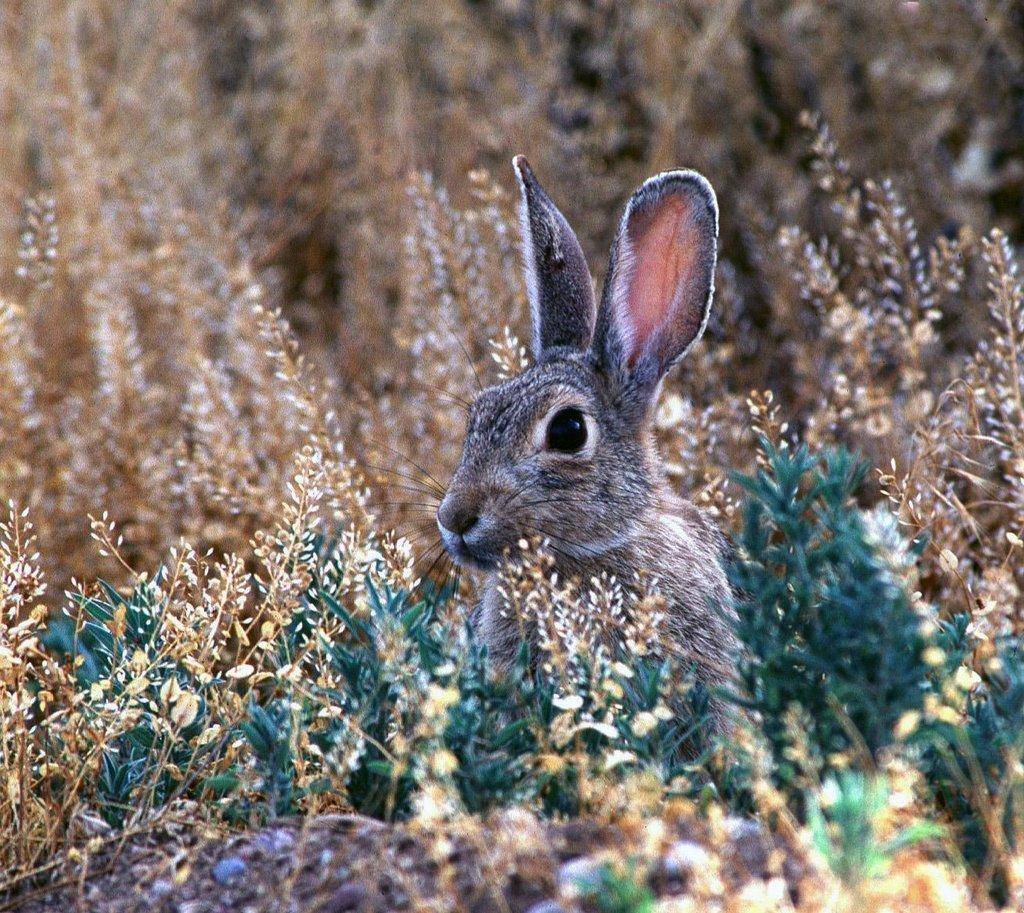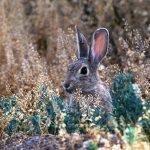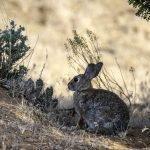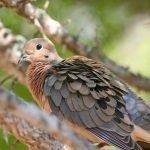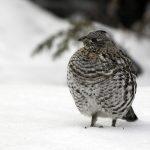DWR News Release
SALT LAKE CITY — If you didn’t draw out for any of the big game hunt drawings, but would still like the opportunity to hunt this fall, you still can! The majority of the upland game hunts in Utah are free and open to anyone with a Utah hunting license. So whether it’s a long-standing tradition or you are wanting to harvest a new species like chukar or grouse, here are a few things you should know that will help you have success.
Doves (mourning and white-winged)
There are an estimated 55.8 million mourning doves across western North America, and the population numbers are similar this year to last year. However, population numbers in Utah appear to have increased, so hunters should expect a better dove hunt this year compared to last year.
Mourning doves can be found all across the state. Doves can often be found near agricultural grain fields because they provide food for doves. Doves also need lots of water throughout the day, so hunting over water sources and near feeding and roosting sites can help hunters find more doves.
“Mourning doves are a popular species for young hunters because they are very numerous and provide a lot of shooting opportunities,” Blair Stringham, the Utah Division of Wildlife Resources assistant wildlife program chief, said.
White-winged doves are more rare in Utah, but can occasionally be found in the southwestern areas of the state. Hunters should keep an eye out for white-winged doves in the same areas as mourning doves.
Because mourning and white-winged doves are migratory birds protected by federal law, you need a Harvest Information Program number to hunt them. Getting a HIP number is easy and only takes a few minutes. You can register for a free HIP number on the DWR website.
The hunting season for mourning and white-winged doves begins Sept. 2 and runs until Oct. 30. Many of the upland game hunts begin on Sept. 2 this year rather than Sept. 1 because hunts in Utah can’t begin on a Sunday.
For more tips on hunting doves, visit the DWR website.
Band-tailed pigeons
The band-tailed pigeon populations are also similar to last year.
“Most Utah hunters don’t take the time to hunt band-tailed pigeons because they are a fairly secretive bird that is difficult to find,” Stringham said. “However, they can be a unique challenge for hunters who are willing to put the time in to find them. It is incredibly rewarding when you find one of these birds and have a successful hunt.”
Look for band-tailed pigeons in southern Utah in areas with Gambel oak, aspen and conifers. The Abajo and La Sal mountain ranges are also hot spots for this species.
Hunting this species does require a permit, but it’s free. This free permit can be obtained on the DWR website. You also need a HIP number to hunt band-tailed pigeons. You can register for a free HIP number on the DWR website.
The pigeon hunting season runs from Sept. 2-14.
Grouse (dusky and ruffed)
There are several grouse species throughout Utah. The dusky grouse and ruffed grouse population numbers are either similar or higher than average in most areas of the state compared to last year’s numbers. However, DWR biologists have reported lower numbers than usual in the northeastern part of the state and in the Wasatch West portion of central Utah.
Dusky grouse, also known as the blue grouse, pine hen, pine grouse and fool hen, are found in higher elevations along the border of aspen and conifer forests. Ruffed grouse, also known as the willow grouse, are found in wetland habitats and along rivers.
“People usually hunt grouse with dogs, but you will still want to move slowly and stop routinely to listen for birds so you can see them crouched down as you pass,” DWR upland game coordinator Heather Talley said. “Sporadically stopping can result in flushing the grouse because they get nervous if you are close to them. And because grouse can escape quickly when they flush, be ready to shoulder your gun for a shot.”
During fall and winter, grouse forage on the ground in areas where flowering plants or grains are available and in areas dominated by sagebrush or in trees or shrubs with fruits and buds.
If you’re able to hunt with a dog, the best time to hunt grouse is an hour or two after sunrise, while the birds have been feeding, so that there will be scent still on the ground for your dog to track. If you hunt grouse without a dog, try early in the morning or late in the afternoon because that is when they’re most active because they’re feeding, and will be the most visible.
“Since grouse spend most of the day on the ground, you can still find them at any time during the day. This means you can still be successful if you are hunting without a dog between prime feeding times,” Talley said.
The dusky and ruffed grouse season runs from Sept. 2 to Dec. 31.
For more tips on hunting either species of grouse, visit the DWR website.
Partridge (chukar and gray)
Chukar population numbers are down this year in most of the state, due to last year’s drought, but they are beginning to rebound because of the wet spring. Although most of the state is predicted to have fair hunting this year, chukar hunting in the southeastern part of the state should be more successful than it has been during the past few years. Tooele, Juab and Millard counties generally have the highest chukar concentrations. To find chukars, hunters should target the rocky areas in the deserts west of I-15. Focus on steep slopes with rocks and bunch grass, sagebrush or cheat grass.
The best time to hunt chukars is early in the morning since that’s when they’re feeding and when they tend to be vocal, making them the easiest to find.
“If one of the birds sees you while the rest are feeding, it will call out to alert the others, helping you to know where their group is located,” Talley said. “You may increase your success rate hunting near water, but chukars aren’t completely dependent on water, and rely on it even less later in the year. Once winter hits, hunt the south-facing slopes, where the sun will be melting snow and warming the rocks, making it a good area for chukars.”
Gray partridge (also known as Hungarian partridge or Huns) also have about the same population numbers as last year, except for in Cache County, where there is a slight increase. Gray partridge can be found on public lands in the western part of Box Elder County, and on private land in eastern areas of the county, as well as on private property in the western part of Cache County. Don’t forget to get written permission from the landowner before entering private property.
There will be pen-raised birds released on public lands again this year prior to the hunts.
Both partridge seasons will run from Sept. 28, 2019 to Feb. 15, 2020.
Cottontail rabbits and snowshoe hares
Cottontail rabbit populations are low statewide this year. Look for these rabbits in riparian areas with sagebrush and willow trees, and try hunting early in the morning or late in the afternoon, when the rabbits are feeding.
If multiple hunters walk in a straight line with several yards between them, they’re likely to find some rabbits feeding or resting. Be sure to walk slowly and quietly because cottontails have incredible hearing. However, if you are vigilant, you can find them near sagebrush or rocky outcroppings.
Be sure to wear hunter orange, since it won’t deter the rabbits, and will make it easier for other hunters to spot you. Small caliber rifles, such as .22 and .17, are great for rabbit hunting, or you can also use shotguns with No. 6 shot. Note that some areas require lead-free ammunition, so be sure to look up restrictions before you head into the field.
Find more cottontail rabbit hunting tips on the DWR website.
Snowshoe hares can be found in high-elevation forest areas with conifer and aspen trees. The best habitat for hares are typically 8,000-9,000 feet in elevation and are more difficult to access than where cottontails are found. Hares can be found along the Wasatch Plateau (the range of mountains that run north to south through the center of Utah) and east in the Uinta Basin.
While they are a brownish gray color in the summer, snowshoe hares are completely white in the winter, except for the black tips of their ears. The best strategy for finding hares is to wait for the first snowstorms of the year, and then look for the hare’s unique tracks. Their track looks like a miniature snowshoe, hence their name. Snowshoes or snowmobiles are often required to hunt snowshoe hares after the snow falls.
Snowshoe hares have a limited home range, so if you find an area that has plenty of tracks in it, there’s a good chance a hare is hunkered down in some vegetation nearby. Move slowly through their habitat, watching for the outline of a hare and its dark black eyes. Kicking brush piles as you walk can also cause hiding hares to flush into the open.
Small-caliber rifles and shotguns are great firearms to use for hunting hares.
The cottontail rabbit season runs from Sept. 2, 2019, to Feb. 28, 2020. The snowshoe hare season runs from Sept. 2, 2019, to March 15, 2020.
Upland Game Slam
To add an extra challenge to your hunts, consider participating in the Upland Game Slam. Similar to the Utah Cutthroat Slam, it encourages hunters to harvest a variety of upland game species, while generating money to help fund a variety of habitat and upland game-related projects.
There are currently six different slams, which you complete by harvesting the target species. Each slam is designed to give you an extra challenge while you’re hunting, as well as the opportunity to earn a commemorative, collectable coin.
Learn more about how to participate in the Upland Game Slam here.
See page 20 in the 2019-20 Upland Game and Turkey Guidebook for a complete list of legal weapons for each upland game species.
Youth hunts
The statewide youth hunt for chukars is Sept. 21-23, and birds will be released just prior to the hunt. There will also be an organized youth chukar hunt on Sept. 21 in Nephi. More details can be found on the DWR website.
- Photos courtesy of Utah Division of Wildlife Resources
- Cottontail rabbit numbers are down this year, but if you find a pocket of rabbits, you can still have some fast shooting. Utah’s rabbit hunt runs until Feb. 28.

